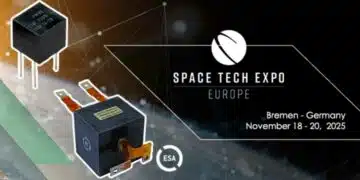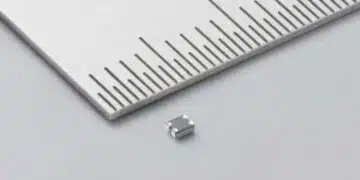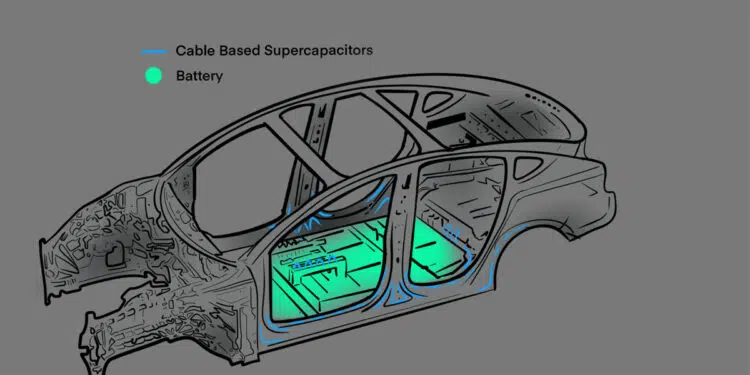Capacitech recent article propose use of its flexible supercapacitor CBC Cable-Based-Capacitor in EV and HEVs to effectively use existing free available space.
With the ever-increasing popularity of electric vehicles (EVs), companies must compete in price, range and cargo space to capture more market share.
Tremendous activity is happening in the EV energy storage space to optimize range, size and longevity. Many companies are working to implement solid-state batteries among other innovations, many of which are still years away from mass market adoption.
So how are companies optimizing EV energy storage systems?
One way electric vehicle companies, like Tesla, are improving their energy storage systems is by building batteries into every part of the vehicle possible. Tesla’s new battery pack for the Model Y is expanding into structural parts of the vehicle, rather than limiting batteries to placement inside the space dedicated for the energy storage system.
This adoption of structural energy storage reduces the number of parts required, greatly simplifying the assembly process and decreasing the vehicle’s total mass. As a result, improvements in efficiency and range, and a decrease in cost, can be expected.
Where else can a battery go?
Battery cells come in rigid form factors. This limits where and how they can be implemented without forcing major design tradeoffs. For example, if an EV company wants to increase the size of its energy storage system, they may have to sacrifice cargo space that could have otherwise been an attractive feature to consumers.
But what if energy storage technologies were not limited by the shapes and sizes they traditionally come in.
Now, it’s no longer a question of “if.”
A Flexible Future
Capacitech provides a high-power storage option that can be integrated into complex geometries such as the parts of the vehicle a traditional battery does not fit into. It’s called the Cable-Based Capacitor, or CBC.
The CBC is a flexible, wire-shaped supercapacitor optimized to populate unconventional space that would otherwise be left unused. The CBC helps engineers expand the energy storage system to new places to complement batteries and improve performance. Unlike conventional supercapacitors, CBCs can be routed throughout an EV’s wiring infrastructure, adding energy storage to pre-existing systems without sacrificing space that could be used to add more batteries or cargo space.
































